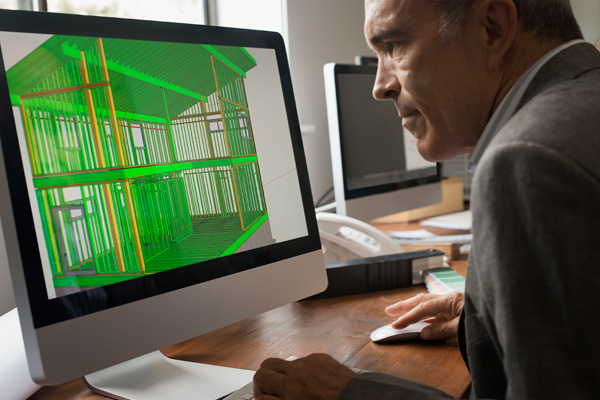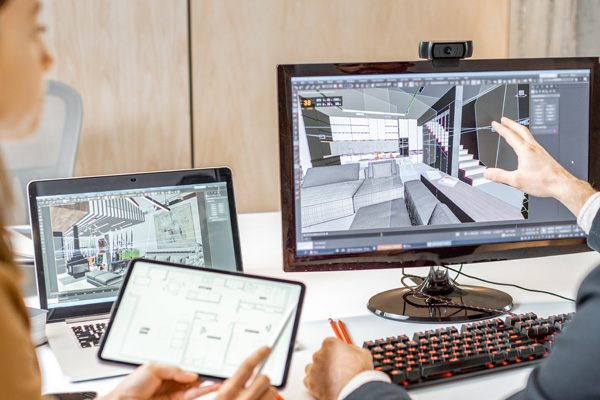CAD and BIM Powered Duct Detailing Saves Project Costs
Affordable White-Label CAD & BIM Services for Your Business
In 2019, The Construction Labor Market Analyzer estimated that when tallying both direct and indirect labor costs, labor often accounts for up to 40% of commercial project expenses. With manpower shortages pushing up construction costs in recent years, that number has risen to 50% and above. At the same time, material costs like wood, steel, insulation, and masonry have also seen increases between 11% and 22%.
It’s clear: saving money and remaining competitive in construction has become a mission of optimizing the use of both labor and materials. You can’t afford to waste MEP materials (mechanical, electrical & plumbing) or the time of anyone involved in fabrication, detailing, or installation.
That’s where services like computer aided HVAC duct detailing can make a difference.
At The Cincinnatus Group, we offer Affordable White-Label CAD & BIM Services for Your Business. Visit us at www.TCGDUCT.com. We’re a systematic ductwork materials management company, and we’re “called to solve, where others struggle.”
Increased Accuracy and Precision
CAD and BIM software surpass manual drafting by delivering accurate measurements and state-of-the-art detailing. This accuracy is crucial for HVAC ductwork, where even minor errors can lead to significant problems during installation. The precision of these digital tools minimizes the risk of errors, ensuring that ductwork fits correctly the first time.
As any project manager who has dealt with on-site trade clashes or mis-measured lengths of duct can tell you, improved accuracy immediately reduces costly adjustments on-site.
Efficient Detailing and Modification
The inherently flexible nature of construction projects often requires modifications to the original ductwork plan. This happens for a variety of factors, such as changes in architectural planning, unforeseen structural challenges, or updated compliance standards. For example, if a newly discovered load-bearing wall limits the space for duct installation, the project must be adjusted to accommodate this constraint while still ensuring optimal airflow.
CAD and BIM enable quick and easy modifications, significantly reducing the time and labor costs associated with manual redrawing. This agility ensures that projects can adapt to changes without significant delays or cost overruns.
Improved Collaboration
BIM enhances collaboration among all stakeholders in a project, including architects, engineers, and contractors. By working within a shared digital environment, changes and updates can be shared in real-time.
This seamless communication ensures that everyone is working from the most current details, reducing the likelihood of costly miscommunications and rework.
Enhanced Visualization
3D modeling capabilities of CAD and BIM provide realistic visualizations of the ductwork within its intended environment. This visualization helps in preemptively identifying potential clashes or construction issues, allowing for adjustments before physical work begins, thereby saving time and resources.
Material Optimization and Waste Reduction
One of the key benefits of CAD and BIM is their ability to optimize material usage. By detailing ductwork to use the minimum necessary materials, these technologies significantly reduce waste. This optimization not only lowers material costs but also contributes to more sustainable construction practices.
Integration with Analysis Tools
BIM models are compatible with various analysis tools that can evaluate energy efficiency, load calculations, and environmental impacts. This integration allows for the installation of HVAC systems that are not only cost-effective but also environmentally friendly and compliant with regulations.
Automated Documentation
CAD and BIM streamline the generation of detailed documentation, including bills of materials, cost estimates, and installation guides. This automation reduces the time spent on manual document preparation and increases the accuracy of project estimates and inventories.
Reduced Labor Costs
By automating and streamlining the detailing work, CAD and BIM significantly reduce the labor hours required. This efficiency translates into direct labor cost savings, as fewer hours are needed to complete accurately detailed ductwork.
Facilitates Duct Fabrication
CAD and BIM models also improve the fabrication of duct sections. By providing detailed specifications and accurate models, fabricators can cut material waste by about 60 to 70 percent and improve shop productivity. This shows the amazing benefits of using computer aided technologies in the duct fabrication processes.
All these factors come together to demonstrate the integration of CAD and BIM in HVAC duct detailing represents a significant step forward in construction technology.
These digital tools offer unparalleled accuracy, efficiency, and collaboration potential, leading to substantial cost savings across the board. As the industry continues to evolve, the adoption of CAD and BIM is becoming a necessity for competitive and cost-effective HVAC ductwork projects.
At The Cincinnatus Group, we offer Affordable White-Label CAD & BIM Services for Your Business. Visit us at www.TCGDUCT.com. We’re a systematic ductwork materials management company, and we’re “called to solve, where others struggle.”
Additional Services from The Cincinnatus Group
At The Cincinnatus Group, we also offer the highest quality contracted services in the areas of contracted sales/marketing, estimating and take-offs, and CAD/BIM/Coordination Drawings.
For any HVAC Fabricator looking to step up their game and ensure they’re working with the best, The Cincinnatus Group is ready to help. Contact us today at 878-295-8009 or through our website’s Contact Us page, and let’s build something great together.








